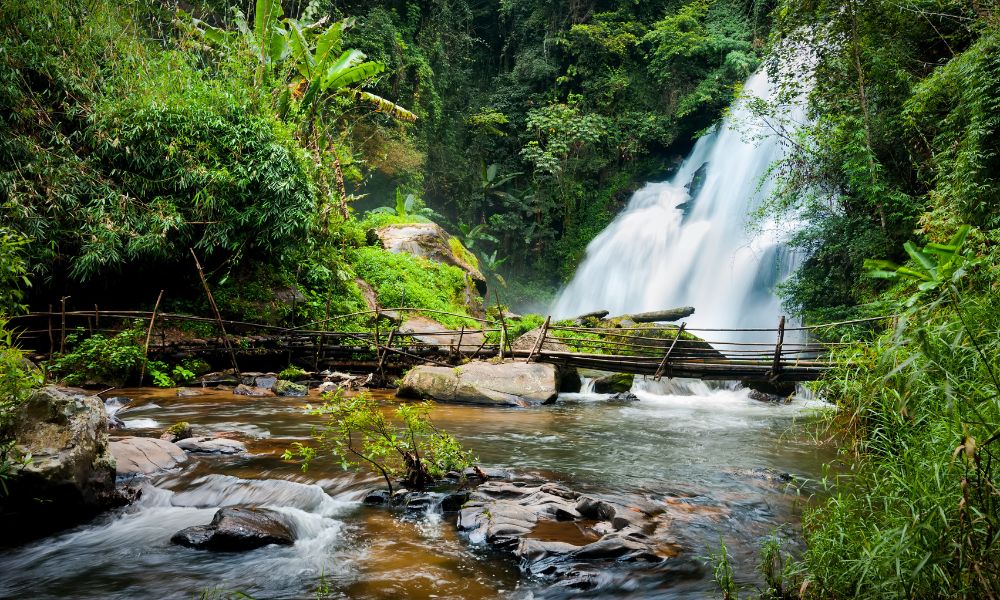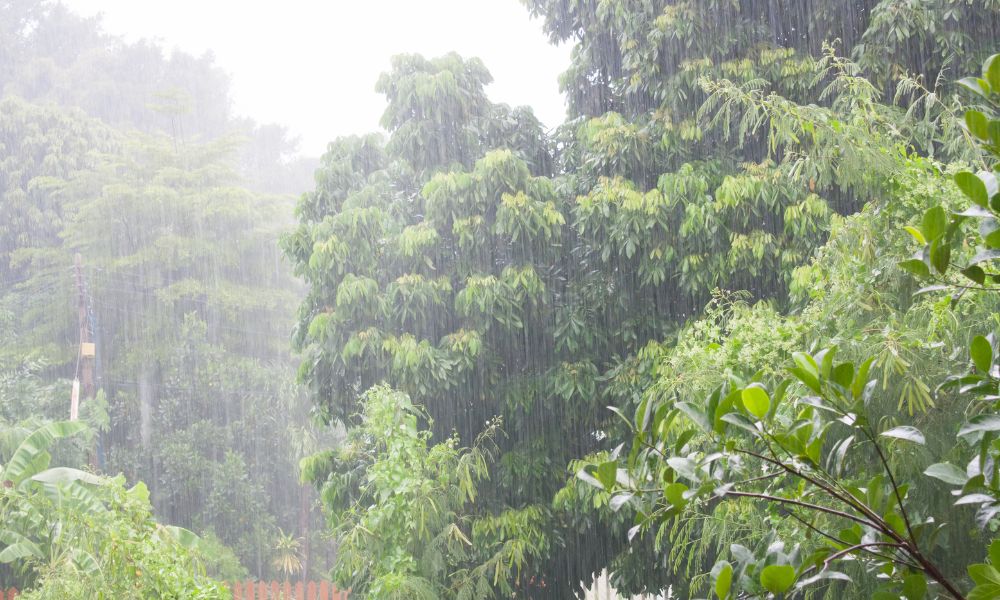Planning a vacation is always an exciting process, especially when it comes to tropical countries. Tempting beaches, exotic nature and bright sun attract us all year round. However, before buying a tour, it is worth carefully studying the climatic conditions of the chosen destination. Many popular resorts are affected by the rainy season. Traveling during this period may not be the most pleasant experience, but booking hotels at favorable prices and cheap air tickets attract the attention of tourists. Let's figure out what the rainy season is and whether it is worth risking your vacation.
What is a tropical climate?
Tropical climates are characterized by high temperatures and heavy rainfall throughout the year. Near the equator, the sun is high, providing uniform heating of the surface. This leads to the formation of ascending air currents, which are saturated with moisture over the ocean and fall as rain. In the tropics, two distinct seasons are often observed: dry and wet. The wet season, or rainy season, is characterized by a significant increase in precipitation and increased humidity.

The Impact of the Rainy Season on Leisure
Imagine: you dreamed of sunbathing and swimming in the azure sea, but instead you are forced to sit in your hotel room, watching the incessant rain. Rain can make it difficult to move around the country, make excursions less enjoyable and even dangerous. In addition, increased humidity and heat can cause discomfort, especially for people who do not tolerate such weather conditions well. It is important to take this weather information into account in order to plan your vacation correctly.
Regions with rainy season
The rainy season is a phenomenon common to many tropical and subtropical regions of the world. If you are planning a trip, it is worth finding out in advance what time of year rain is most likely.
Here are just a few popular destinations to consider during the rainy season:
- Southeast Asia (Thailand, Vietnam, Indonesia)
- Caribbean (Cuba, Dominican Republic, Jamaica)
- Indian Ocean (Maldives, Seychelles, Mauritius)
- Central America (Costa Rica, Panama)
- South America (Brazil, Colombia)
This is just a short list of regions where you should consider the time of year when planning your vacation. Before buying tours from a tour operator, be sure to study the climatic features of the selected country.

Duration of rains in the season
The duration of the rainy season may vary depending on the region and the specific year. In some places, it rains almost daily, but for a short time, while in others, downpours can continue for several days in a row. On average, the rainy season lasts from several months to half a year. For example, the rainy season in the Maldives is from May to November, like the rainy season in Thailand. In Thailand, it does not rain constantly. Often, these are showers that begin suddenly and end quickly, after which the sun comes out again. There are days when there is no rain at all, and there are periods when it rains for several days in a row. It is important to understand that even during the rainy season, there are sunny days, but the likelihood of their occurrence is much lower than in the dry season.
Why can rainy season make travel risky?
In addition to the obvious discomfort associated with constant rain, traveling during the rainy season can be associated with certain risks. Washed-out roads, floods, landslides - all this can make it difficult to move around the country and make excursions dangerous. In addition, high humidity promotes the reproduction of mosquitoes and other insects that carry various diseases. Therefore, before going on a trip in the low season, it is necessary to carefully weigh all the pros and cons.

Best Travel Destinations During Rainy Season
Don't despair if your vacation falls during the rainy season. There are destinations where you can have a great vacation even during this period. Here are some examples of the best resorts during the rainy season :
- Microclimate countries: Some mountainous regions create unique climatic conditions where rainfall is not as intense.
- Cities with developed infrastructure: Large cities such as Singapore or Hong Kong offer a variety of indoor activities that can help you escape the elements.
- Islands with short rains: On some islands, rains are short and quickly give way to sunny weather.
The choice of direction depends on your preferences and willingness to put up with possible inconveniences.

Rainy Season Travel Tips
If you do decide to travel during the rainy season, here are some tips to help make your vacation more comfortable:
- Choose hotels with developed infrastructure: the presence of a swimming pool, spa, restaurant and other entertainment will help brighten up rainy days. Look for the best hotels offering various leisure options.
- Take waterproof clothing and footwear with you: an umbrella, raincoat and waterproof boots are your best friends during the rainy season.
- Be prepared for changes in plans: Rains can make adjustments to your plans, so be flexible and ready for change.
- Research the weather: Check the weather forecast before and during your trip.
- Consider health insurance: Having health insurance will help you in case of illness or injury.
- Find the best deals on flights and hotel bookings: Use flight search engines and hotel booking sites to find great deals.
Buying a tour during the rainy season is always a risk, but the risk is justified if you have carefully prepared and chosen the right destination. You should not be afraid of the rains, because even at this time you can get a lot of positive emotions and impressions. The main thing is to remember the possible risks and be ready for changes.








 ios
ios
 android
android



 BYN
BYN  RUB
RUB 
















